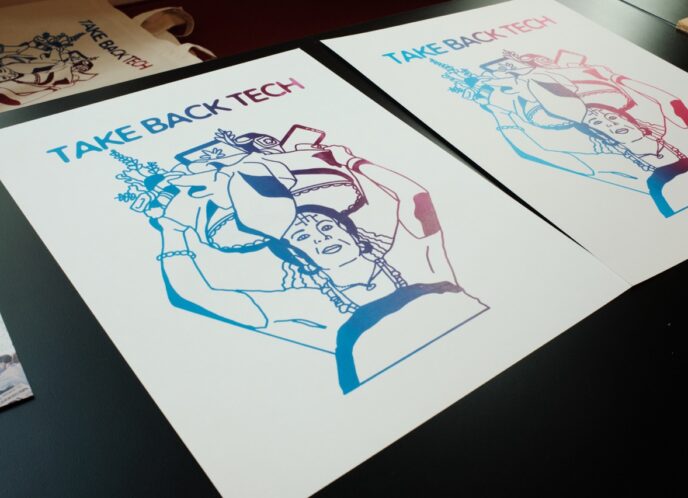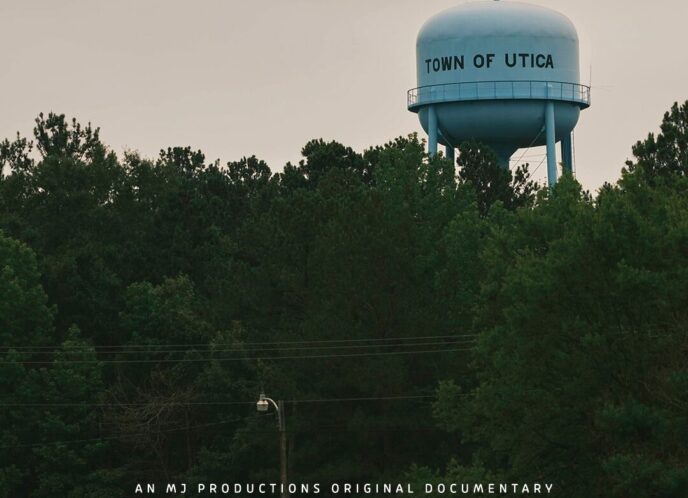 Tracy Rosenberg has worked as Media Alliance's Executive Director since 2007. She has organized and advocated for a free, accountable and accessible media system, focusing on the protection and sustainability of alternative media outlets monitored the mainstream media for accuracy and fair representation and facilitated the training of numerous nonprofit organizations and citizen's groups in effective communications. She currently sits on the boards of the the Alliance for Community Media Western Region, the Pacifica Foundation and Common Frequency and serves on the anchor committee of the Media Action Grassroots Network.
Tracy Rosenberg has worked as Media Alliance's Executive Director since 2007. She has organized and advocated for a free, accountable and accessible media system, focusing on the protection and sustainability of alternative media outlets monitored the mainstream media for accuracy and fair representation and facilitated the training of numerous nonprofit organizations and citizen's groups in effective communications. She currently sits on the boards of the the Alliance for Community Media Western Region, the Pacifica Foundation and Common Frequency and serves on the anchor committee of the Media Action Grassroots Network.
A long time partner, anchor and media justice ally, we're excited that Tracy took a few moments away from her busy work day to answer some questions about Media Alliance, what they've been up to, and to offer some great resources for the media rights and access community. Read on to find out more about their exciting work.
Can you tell us about the mission and vision of Media Alliance, and who you serve (in your own words)?
Founded in 1976, Media Alliance is the longest running regional media activism organization in the United States. We have worked at the intersection of journalism, public education and advocacy for over three decades. We have received awards for our work from the Bay Guardian, the Society for Professional Journalists, The Tenants Association of San Francisco and legislators Leland Yee and Nancy Pelosi.
Our mission has always been simple: working towards a media system that is accurate, accountable and operating in the interests of increased social and economic justice. Over the years, the implementation of that mission has taken us from media watchdog activities, to supporting journalists of conscience, standing up for independent media when threatened, towards training under-represented communities to make their own media, and now to a model of regional public education and advocacy on communication rights.
Our goal is a vital, sustainable, independent media/arts sector in California that provides a marketplace for innovative and independent content serving historically unfulfilled needs around education, information, and- community-based arts and culture. We strive to take media content production and infrastructure out of the hands of corporate entities that are hostile to the needs of communities.
What does media justice mean for Media Alliance? Why did you all decide to anchor the Bay Area Chapter?
Media justice is a term for a communications system that is equally accessible for everyone regardless of status in society. It posits that communication rights are absolute and divides are not acceptable. When we start to transform the power dynamics in the communications system, we facilitate more informational and cultural content that supports justice, equality and social change. Media infrastructure: who owns it, who has access to it and who has influence over it, shapes the public agenda and influences the conditions we face. Changing the infrastructural reality by both policy reform and the protection of community media alternatives will lead us to a different kind of public conversation and a better set of options as a society.
We believe organizing is local and despite the national (and international!) aspects of battling corporate megalopolies within the media sector, there can be no meaningful change without local and regional hubs that build power and partnership from the ground up. Working across so many platforms and sectors (TV, radio, internet,
print media, film, independent and DIY, community, alternative, progressive and even occasionally parts of the mainstream media), we work towards uniting all who recognize the problems with the collusion between the media system and the power structures to advocate for holistic change.
Media Alliance was just featured on the news for your great work with Common Frequency on community media (Low-Power Radio) tell us more about what you're doing around that and what's coming up?
Low-power radio has the potential to be the single largest shift in media ownership the US has seen in a very long time. Thousands of new construction permits will be issued in a filing window currently scheduled for October of 2013. These stations, set up in unused strips in the FM radio band between the incumbent broadcasters, will have the
power to distribute the kind of content that is rarely heard on the corporate chain broadcasters. Radio is inexpensive and widely accessible. We are working hard to ensure as many community groups as possible apply for these permits and get their stations up and running, but it's a huge project. One of the things we're doing is doing volunteer outreach trainings around the Bay so we have a little army working to let people know about the opportunity and get them from saying "what if" to filling out an application.
You're also doing some great things around PEG (Public, Educational, and Governmental) Public Access- can you share some of your work?
PEG stations are the gift (somewhat grudging) from the large cable companies to the communities where they have exclusive franchises for cable services. In return for this present, the companies provide channels for public service including the airing of local public meetings, educational telecourses and public access, which allows members of the community to learn how to make television programs and broadcast to their neighborhood.
Spearheaded largely by AT&T, in recent years, the cable companies have gone from state to state pushing for laws that limit the financial contributions they have to make to support these services and endangering the sustainability of community media/television centers. This has been very sad. We are helping to organize both the centers themselves and the users and residents to try to fight back, both by trying to change these new franchising policies (both statewide and nationally) and also to partner with other kinds of community media like radio and the hyperlocal Internet news sites (among others) to get bigger and stronger and survive the cable company attacks.
Please share with the MAG-Net community your top news tip(s) or resource for the media justice movement.
By all means, check out our website at www.media-alliance.org and subscribe to our Media News newsletter, which goes out about twice a month. On top of that: I always recommend that people follow the Electronic Frontier Foundation (www.eff.org) for cutting edge information about the state of the Internet, Project Censored (www.projectcensored.org) for the news we're not getting, and Media Literacy Project (www.medialiteracyproject.org) and the Action Coalition on Media Education (acmecoalition.org) for educational resources. I also love Women in Media and News (www.wimnonline.org).



